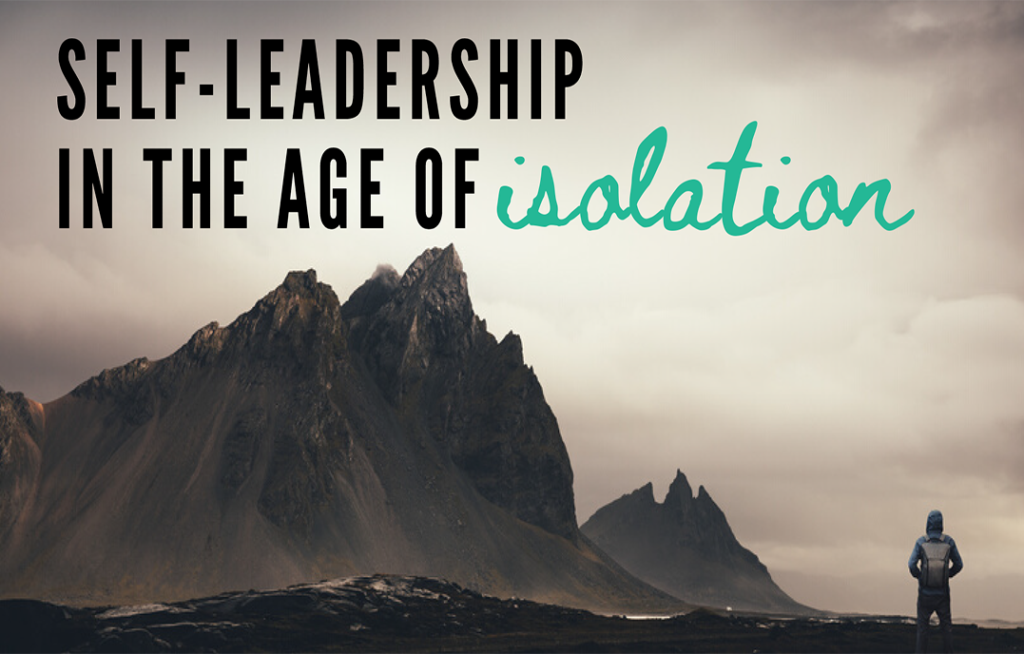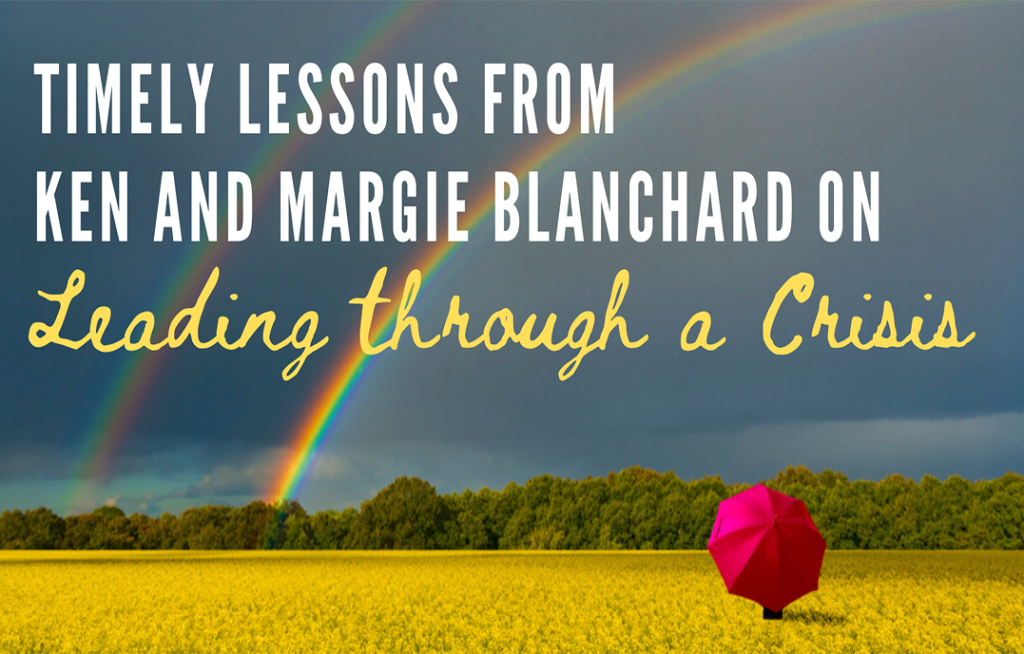
Leadership
Over the past 15 years, I have been honored to explore and debate the intersection of power and leadership with my friend and Center of Executive Excellence Co-Founder, Dr. Tony Baron.
Before our paths crossed, Tony had established himself as one of America’s most sought after consultants on the subject of violence – in the workplace, in schools, and in the public square. He counselled survivors of the 1995 bombing of the Murrah Building in Oklahoma City, the Columbine High School massacre in 1999, and the September 11, 2001, attack on The World Trade Center. In 2009, Tony accepted the role as President of The Servant Leadership Institute in San Diego, California, to help spread the concept of transformational servant leadership in corporate America and religious institutions. He led sold out conferences featuring speakers such as Ken Blanchard, John Maxwell, and Southwest Airlines President Emerita Colleen Barrett.
Tony’s work resulted in the publication of three books on the subject: The Art of Servant Leadership (2010), a compelling case study of leadership tested by adversity, The Cross and the Towel (2011), a call to action for Christian leaders to set aside ego, political correctness and selfish ambition in their ministry, and Servant Leadership In Action (2018), a collection of essays co-edited by Ken Blanchard.
I interviewed Tony last week on the topic of Self-Leadership in the Age of Isolation (watch the recording here). He shared the need for leaders to create both inner and outer peace in order to manifest a non-anxious presence through an In, Out and Up model.
Peace defined
“Peace is not the absence of conflict,” Tony said. It’s a pervasive sense of well-being that leaders must intentionally cultivate so that when conflict comes, they don’t get knocked off balance. Instead, they have the presence to steer the ship through the storm. Tony’s mentor, the late Dallas Willard, taught him that peace isn’t something that you drift into. You can’t fake it. Peace is achieved by having a vision, being intentional about dedicating yourself to that vision, and employing the tools necessary to help keep you on the path.
In, Out and Up
To illustrate, Tony used the model of a triangle. Inside of the triangle is peace, or the pervasive sense of well-being. One corner of the triangle focuses on what you’re allowing in your life. Are you spending quality time with those who are important to you? Or, are you spending more time than necessary on screens? Which is more likely to bring you peace and which is more likely to cause anxiety? “You’ll know when you’ve struck the right balance in your inner life,” Tony said, “when you experience gratitude.” The bottomless scroll through social media apps or watching 24/7 breaking news is not going to result in gratitude. But, spending quality time with people with whom you have meaningful relationships will.
Leaders who are at peace don’t focus solely in their inner lives, according to Tony. They also naturally address the opposite corner of the triangle – the out. That outward focus manifests itself in generosity. Leaders who devote time, talent, and/or treasure to others can offset narcissistic tendencies like a sense of entitlement.
To complete the triangle, Tony suggested that leaders also need a space for an up in their lives. Whether your up is the acknowledgment of a higher power or God, knowing that there is something or someone that can do things that you don’t have the power to do on your own helps complete the peace triangle. We find grace in the up. “Grace is the unmerited favor,” said Tony, “that reminds us that there is something bigger than ourselves.”
If we think of peace as the absence of conflict, we focus on the pleasure principles of life that bring us short-term results. But, leaders who endure are those who work on manifesting gratitude, generosity and grace. Thank you, Tony, for sharing your wisdom on self-leadership.
Question: World peace begins with inner peace. – Dalai Lama. What are you doing to manifest inner peace in your life today?
Driven by the premise that excellence is the result of aligning people, purpose and performance, Center for Executive Excellence facilitates training in leading self, leading teams and leading organizations. To learn more, subscribe to receive CEE News!

Leadership
You’re probably getting flooded with free advice right now. You suddenly have access to everything from ways to indulge yourself without breaking the budget, to virtual art and culture exhibits to unlimited, free training and development during the coronavirus. The options for what to do during this unprecedented time in history can be overwhelming. If you’re facing a deluge of distractions right now, chances are that your team members are too. Now, more than ever, it’s critical that you lean in and takes some basic steps as a leader to keep you team focused and productive.
We’re conducting a series of leadership webinars to help you steer your ship in the middle of this storm. You can access the webinar recorded version of our April 9th webinar here, and follow the notes below for “3 Things You Should Be Doing Right Now to Lead Your Team Through This Crisis.”
#1 – Build a Cohesive Leadership Team
Whether you’re a student of Stephen M.R. Covey’s The Speed of Trust or Patrick Lencioni’s The Five Dysfunctions of a Team, you know that trust is like the oil that keeps an engine running.
- Both Covey and Lencioni agree that high trust increases speed and delivers results.
Can your leadership team do the following?
- Admit weaknesses and mistakes
- Ask for help
- Accept constructive feedback
- Assume positive intent
- Focus on the goal, not personal politics
If not, take advantage of online tools like the free trial of the Five Dysfunctions of a Team offered by Lencioni’s The Table Group. Use these tools to help you get vulnerable with each other, so that you can work together collectively and help your organization emerge stronger.
#2 – Have a Temporary Rallying Cry
For the next 2 months, create clarity that breaks through the distraction and focuses on 3-5 key objectives that your team should be focusing on to get you through this time. Your rallying cry could be “Prevent Layoffs,” “Save Jobs,” or “Make this a Time of Cohesiveness and Innovation”.
Next, build a simple scorecard to track those key objectives and use a basic red/yellow/green stoplight schema to track your progress. You can use tools like PowerPoint or Excel or even an inexpensive online cloud-based scorecard like one offered by Spider Strategies to track your progress.
#3 – Use Online Meeting Tools to Overcommunicate
If you’re like us, Zoom has become your go-to virtual tool to stay connected. Zoom hosted a webinar recently to address some of the issues they’ve had about Zoombombing, so be aware of the security measures you’ll need have in place as you decentralize your communications. Prevent Zoombombing: Change these 4 Zoom settings now for secure video chat.
It’s important to avoid “meeting stew” as you shift from in-person to virtual meetings. Just like you have meetings in the office that are tactical, administrative, strategic or team-building in nature, you’ll want to parse your Zoom meetings into clearer context. Here is an excellent article in Harvard Business Review titled, How to Keep Your Team Motivated, Remotely.
Here are some other ways to avoid Zoom meeting stew:
- 10-minute morning check-ins
- 10-minute end-of-day check-outs
- Strategy Execution meeting to form your temporary rallying cry and 3-5 key objectives
- Weekly tactical meetings
- Open CEO Zoom for anyone to drop in for a half-day [like an open door policy]
- Virtual Happy Hours and Team builders [laughter is a great stress reducer!]
Question: What are you doing now to build trust, focus, and communicate as a leader?
Driven by the premise that excellence is the result of aligning people, purpose and performance, Center for Executive Excellence facilitates training in leading self, leading teams and leading organizations. To learn more, subscribe to receive CEE News!

Uncategorized
You know the expression found money? When you put on a jacket that you haven’t worn in a while and find a $20 bill in the pocket? There is such a thing as found time, too. Millions of people now have extra time on their hands during this era of isolation. You can choose to spend yours toggling between 24-hour “Breaking News” reports, or taking advantage of the opportunity to read a good book. We’ve gathered titles for perspective on leading through a crisis, and beautifully written prose that is once both personal and profound. Spend this found time wisely to help you fend off a mindset of isolation and focus on a good read.
 1. How to Do Nothing: Resisting the Attention Economy by Jenny Odell
1. How to Do Nothing: Resisting the Attention Economy by Jenny Odell
What it’s about: “Nothing is harder to do these days than nothing. But in a world where our value is determined by our 24/7 data productivity . . . doing nothing may be our most important form of resistance.” So argues artist and critic Jenny Odell in this field guide to doing nothing. Odell sees our attention as the most precious—and overdrawn—resource we have. Once we can start paying a new kind of attention, she writes, we can undertake bolder forms of political action, reimagine humankind’s role in the environment, and arrive at more meaningful understandings of happiness and progress.
Why pick it up: We featured this book in our post last month, 6 New Books to Read By, For, and About Women, but the topic is even more relevant today when we need an action plan for thinking outside of the narratives of efficiency and techno-determinism. Provocative, timely, and utterly persuasive.
 2. The Splendid and the Vile: A Saga of Churchill, Family, and Defiance During the Blitz by Eric Larson
2. The Splendid and the Vile: A Saga of Churchill, Family, and Defiance During the Blitz by Eric Larson
What it’s about: A story of political brinkmanship set against the backdrop of Churchill’s prime-ministerial country home, Chequers, his wartime retreat, Ditchley, where he and his entourage would go when the moon was brightest and the bombing threat was highest, and 10 Downing Street in London. Drawing on diaries, original archival documents, and once-secret intelligence reports—some released only recently—Larson provides a new lens on London’s darkest year through the day-to-day experience of Churchill, his family, and the advisers in Churchill’s “Secret Circle,” to whom he turned in the hardest moments.
Why pick it up: The Splendid and the Vile takes readers back to a time of true leadership, when, in the face of unrelenting horror, Churchill’s eloquence, courage, and perseverance bound a country, and a family, together.
 3. The Body: A Guide for Occupants by Bill Bryson
3. The Body: A Guide for Occupants by Bill Bryson
What it’s about: Full of extraordinary facts (your body made a million red blood cells since you started reading this) and irresistible Bryson-esque anecdotes, The Body will lead you to a deeper understanding of the miracle that is life in general and you in particular. As Bryson writes, “We pass our existence within this wobble of flesh and yet take it almost entirely for granted.” The Body will cure that indifference with generous doses of wondrous, compulsively readable facts and information.
Why pick it up: For a head-to-toe tour of the marvel that is the human body. As addictive as it is comprehensive, this is Bryson at his very best, a must-read owner’s manual for everybody.
 4. Leadership in Turbulent Times by Doris Kearns Goodwin
4. Leadership in Turbulent Times by Doris Kearns Goodwin
What it’s about: Goodwin draws upon the four presidents she has studied most closely — Abraham Lincoln, Theodore Roosevelt, Franklin D. Roosevelt, and Lyndon B. Johnson. They differed widely in temperament, appearance, and physical ability. They were united, however, by a fierce ambition, an inordinate drive to succeed. With perseverance and hard work, each of these men essentially made themselves leaders by enhancing and developing the qualities they were given.
Why pick it up: This seminal work provides an accessible and essential roadmap for both emerging and established leaders in every field. In today’s world, these stories of authentic leadership in times of apprehension and fracture take on a singular urgency.
 5. The Book of Delights by Ross Gay
5. The Book of Delights by Ross Gay
What it’s about: One of today’s most original literary voices offers up a genre-defying volume of lyric essays written over one tumultuous year. Gay offers a record of the small joys we often overlook in our busy lives. Among Gay’s funny, poetic, philosophical delights: a friend’s unabashed use of air quotes, cradling a tomato seedling aboard an airplane, and the silent nod of acknowledgment between the only two black people in a room.
Why pick it up: The Book of Delights is about our shared bonds, and the rewards that come from a life closely observed. These remarkable pieces serve as a powerful and necessary reminder that we can, and should, stake out a space in our lives for delight.
 6. Gilead: A Novel by Marilynn Robinson
6. Gilead: A Novel by Marilynn Robinson
What it’s about: Robinson’s epistle takes the form of a letter from 76-year-old John Ames, a fourth-generation Congregationalist minister, to his son just before his seventh birthday. Ames is suffering from heart disease, and his letter, written in 1956, is a summing up of the past sprinkled with anecdotes and advice and sketches of the present, especially of his son and his wife and his best friend, also a minister.
Why pick it up: Gilead is better than a good book. It is a slim, spare, yet exquisite and wonderfully realized story that will long stand as one of fiction’s finest reflections on the sacramental dimensions of life. Matchless and towering.
History is filled with great leaders who were avid readers and writers (Winston Churchill won his Nobel prize in Literature, not Peace). Make time during this season of separation to invest in books that will help you navigate through our collective new normal.
Question: What books can you turn to during these times to nurture yourself as a leader?
Driven by the premise that excellence is the result of aligning people, purpose and performance, Center for Executive Excellence facilitates training in leading self, leading teams and leading organizations. To learn more, subscribe to receive CEE News!

Leadership
During the financial crisis of 2008, I was completing my MBA at the Ken Blanchard College of Business at Grand Canyon University. The program was a blend of online classes punctuated by 3-day residencies at Blanchard’s headquarters in San Diego. It was a magical time of learning and growth for me, but a time when Ken and his wife, Margie, experienced some of their darkest years both personally and professionally.
Between the back-to-back Zoom meetings and constant before-and-after hand washings that have become part of my new normal, I find myself thinking about some of the lessons that Ken and Margie shared with our class during those years.
The 2007 wildfires began in the early morning hours of October 21, 2007, near the U.S.-Mexico border. In the end, the fires left 10 people dead and destroyed over 1,600 homes in San Diego County, including the one that the Blanchards had shared for 25 years. Luckily, they were out of town when it happened and no one in their family was injured.
But, all of the possessions they’d left behind – like the family photo albums that Margie had carefully and lovingly assembled through the years – were incinerated. Months later, Margie recalled that she and Ken started receiving what were some of the most precious gifts they could imagine. Not only had Margie made albums to keep at home, she had given away several copies of albums throughout the years for her children to keep in their own homes. One by one, the Blanchard children gifted Ken and Margie with copies of their family photo albums to rebuild their collection.
“In the end,” Margie reflected, “it was the things that we had given away, not the things that we had kept, that came back to us.” What a powerful life lesson in what Ken refers to as “holding loosely and clinging tightly.”
The next year, the 2008 financial crisis hit. The Ken Blanchard Companies was a global leader in management training with programs offered in more than 12 languages and clients across six continents. With the recession looming, the Blanchards treated their employees, not as overhead, but as business partners. They opened their financials and brought in a company called Wild Works to deliver balance sheet training to their employees. Together, the company found ways to cut costs and save jobs. As Ken writes in Leading At A Higher Level, “people without accurate information cannot act responsibly; people with accurate information feel compelled to act responsibly.”
Ken and Margie Blanchard are living proof that the best investments are the ones we make in others, both personally and professionally.
Question: What are you holding loose and clinging tightly to during this season?
Driven by the premise that excellence is the result of aligning people, purpose and performance, Center for Executive Excellence facilitates training in leading self, leading teams and leading organizations. To learn more, subscribe to receive CEE News!
![Business in Focus: Expensify]()
Business In Focus
A closer look at companies executing leadership excellence
.
 Last week, the global number of confirmed deaths from the coronavirus surpassed 50,000 and cases topped 1 million. With cases on the rise, corporations are stepping up to help support people in need of assistance and flatten the curve, like a program just rolled out by Expensify to support SNAP, the United States’ largest anti-hunger program.
Last week, the global number of confirmed deaths from the coronavirus surpassed 50,000 and cases topped 1 million. With cases on the rise, corporations are stepping up to help support people in need of assistance and flatten the curve, like a program just rolled out by Expensify to support SNAP, the United States’ largest anti-hunger program.
(more…)











